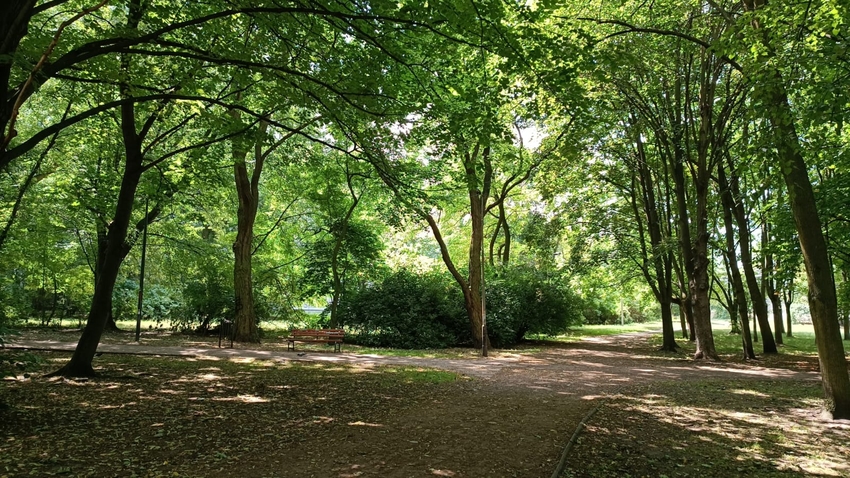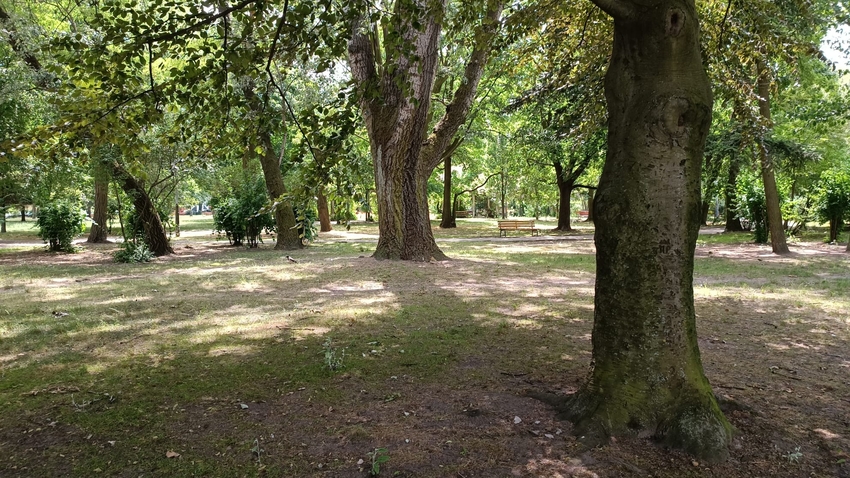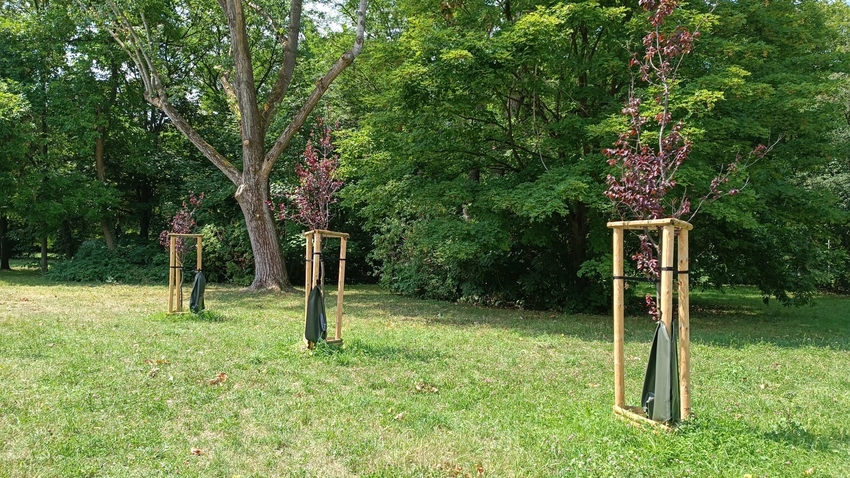There is less and less water
Lack of water in more municipalities, drought in the city, flooding after heavy rainfall, these are handicaps that are getting worse and worse every year. We have worked for this for decades
– says Dr hab. Tomasz Jurczak, Head of the UNESCO Chair on Ecohydrology and Applied Ecology at the Faculty of Biology and Environmental Protection at the University of Lodz.
We noticed that winters in our region were becoming less and less snowy already 20 years ago. Today, winter snow occurs only for a few days or so, and there are also times when there is no snow at all. Why is this so important? Snow cover is responsible for the recovery of groundwater resources. And these are increasingly in short supply. Statistics also show that every year there are more and more municipalities where there is a problem with providing their residents with water. Already at the beginning of June this year, the first notices asking some municipalities to reduce their tap water consumption appeared. – For many years, small towns and cities have functioned properly and there was no shortage of water. However, more and more people are fleeing the cities, building houses in the villages or spending the entire summer season there, often using water excessively, mainly to water their gardens – emphasises Dr hab. Tomasz Jurczak. – All of a sudden, pumps which are designed to serve, for example, two thousand inhabitants, have to take much more water and it turns out that either this is technically impossible or there is simply not enough water. Summer has only just begun and already more than 100 municipalities in Poland are reporting problems with water shortages or poor water quality. In recent years, there have been up to 400 such municipalities per year.
It is not just a question of "our garden" and the fact that soon there will be nothing to water it with.
The scientific journal "Geophysical Research" has published an article showing that the slope of our planet has changed by 80 cm, which is probably due to the fact that people have extracted more than two thousand gigatonnes of underground water in the last 20-30 years – explains Dr hab. Tomasz Jurczak. – And we extracted it only to discharge it into the sewage system and further into the rivers after using it once. This has resulted in sea levels rising by 6 mm. Meanwhile, groundwater is a natural resource that recovers over hundreds or even thousands of years. – By using groundwater resources in an unlimited way, we cause their significant loss, thus disrupting groundwater circulation in nature – adds Dr hab. Jurczak.
Are we to look for water deeper?
Some towns and municipalities have chosen to dig deeper and deeper wells in order to extract water that is located even deeper. – This is not a good idea – says Dr hab. Tomasz Jurczak. – There are places in Poland where people water their lawns with Oligocene water but this is a complete absurdity. Oligocene water, as water of the highest quality, should only be used for drinking. We should learn to use the water that is available on the surface of the earth.
Easy to say, harder to do. Water is simply running away from our cities. Cities are expanding and at the same time becoming more and more concreted. – On every street, high kerbs mean that water gets into drains instead of going into the ground and is piped out of the city – alarms the scientist. – The water flows into the straightened, sometimes also concreted rivers and flows too quickly towards the sea. We are in talks with city and municipal authorities to use urban green areas, mainly in areas of great natural value such as river valleys, which are unfortunately increasingly being built over, to let the rivers flow there and to use this green and blue infrastructure to retain water in the soil and plants.
 Preserving old-growth stands in cities provides shade during hot weather (Photo: Dr hab. Joanna Grabowska)
Preserving old-growth stands in cities provides shade during hot weather (Photo: Dr hab. Joanna Grabowska)
However, scientists stress that erroneous river maintenance activities leading to the mowing of vegetation and dredging of riverbeds lead to further degradation of these ecosystems. During periods without rain, the water level that is lowering in the rivers makes the groundwater in the valleys also lower.
Water is critical infrastructure
According to scientists, it is not too late to fight for urban water. – We must learn to think of water and greenery as critical infrastructure, just as we do in the case of road or transmission infrastructure, i.e. power or gas – emphasises Dr hab. Jurczak. – This issue has been first raised in Nature by Dr hab. Iwona Wagner. No one builds a house, office building or housing estate today without considering these utilities, so why are we overlooking greenery and the possibility of rainwater retention? If we learn to manage the city's water properly, we can avoid not only drought but also flooding during heavy rainfall, which is also becoming more frequent. Thus, the possibility of water retention in the landscape where it occurs, e.g. as a result of rainfall, should already be taken into account at the various developments planning and design stages. The availability of biologically active areas, capable of storing this water, is also an important element, but so is the presence of trees, especially large ones already growing in a given area. They are the ones that provide shade and retain the most water. They also allow the temperature to drop by up to 10 degrees Celsius. – Cutting down mature, large trees for new building developments and planting new ones in their place, which in many cases wither away within a short period of time, is not exactly the right approach. If even these new plantings take hold, it will take at least a dozen years before they can provide us with the benefits that the mature ones provided – the researcher adds.
 Large trees provide plenty of shade and help to lower the temperature by up to 10 degrees Celsius. (Photo: Dr hab. Joanna Grabowska)
Large trees provide plenty of shade and help to lower the temperature by up to 10 degrees Celsius. (Photo: Dr hab. Joanna Grabowska)
The cities will "de-concretise" themselves
So where to look for the solutions? Are cities and municipalities taking any actions in this direction? – Very often local authorities ask us to help them 'de-concretise' cities – says Dr hab. Jurczak. – Interestingly, places (railway stations, squares, arterial roads) that have been built or thoroughly rebuilt in the last few years are most often indicated as the most critical ones. Unfortunately, 'de-concretising' the already existing infrastructure is much more difficult and much more expensive than planning it correctly at the design stage (i.e. including greenery, for example). Sometimes changes are not possible at all, due to the underground infrastructure. So how do we deal with concrete, lack of greenery and lack of water in the city? – Cities can "de-concretise" themselves – claims Dr hab. Tomasz Jurczak. – We are able to achieve a satisfactory effect within a dozen or so years, provided that we start implementing changes immediately. It is sufficient to take into account the possibility of leaving an adequate biologically active area covered with multi-species vegetation for each new development, which will also be used to retain as much rainwater as possible. If we approach every investment this way, starting with a car park, street or pavement reconstruction and ending with new construction, we are able to achieve success within a short period of time. On the one hand, these are often small changes at the level of ongoing and planned investments, but on the other hand, it is a huge change, i.e. a change in thinking about water and greenery as critical infrastructure.
 Irrigation system for newly planted trees in J. Dąbrowski Park in Lodz (Photo: Dr hab. Joanna Grabowska)
Irrigation system for newly planted trees in J. Dąbrowski Park in Lodz (Photo: Dr hab. Joanna Grabowska)
Source: Faculty of Biology and Environmental Protection, University of Lodz
Text: Justyna Kowalewska (3PR)
Photos: Dr hab. Joanna Grabowska, Dr hab. Tomasz Jurczak
